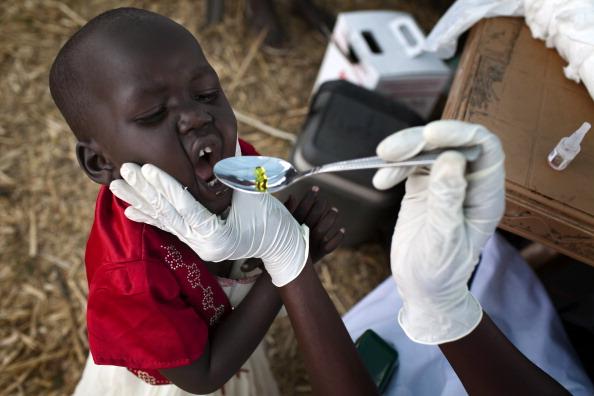Let’s put this in fairy tale terms. Your neighbor is a poor widow who struggles to feed her beloved son and daughter. She is ill and weak, in danger of dying. In your garden there is a tree covered with magical healing fruits. You’d like to give her one, because you know it would restore her strength. Your wife says you must not, because there are not enough to share.
Your cautious wife is like some members of the American public. In a 2013 Kaiser Family Foundation (KFF) survey, most people estimated that 28 percent of America’s annual budget goes to foreign aid. It’s actually 1 percent. Out of that 1 percent, a smaller amount funds global health programs, according to an analysis by KFF based on information from the Office of Management and Budget.
Less Than 1 Percent
That less than 1 percent is $9.4 billion. It covers treatment and prevention for HIV, tuberculosis, and malaria, and supports maternal and child health, nutrition, and family planning. It covers neglected tropical diseases (NTDs), pandemic influenza, and other emerging threats.
President Obama’s global health budget request is smaller in 2015 than it was in 2014, according to Adam Wexler, director of the Global Health Budget Project at KFF. It is all discretionary spending, which means it has to be reauthorized by Congress every year.
It may sound dry or distant, but these are matters of life and death. President George W. Bush started The President’s Emergency Plan for AIDS Relief (PEPFAR) program to deliver anti-retroviral drugs to people in Africa. It has saved millions of lives.
Flat Means Shrinking
PEPFAR funding grew steadily under Bush, but flattened out after the great recession began. When Obama was a senator, he pledged to continue the program, and it does continue, but it has not been growing.
Being flat in nominal dollars is a reduction in real dollars, according to Tony Fratto, the former deputy press secretary to President George W. Bush. Fratto said that as the Bush administration was ending, those who worked to start PEPFAR and other health programs were worried about how the lifesaving expenditures would weather the economic storm.
“It was a lot of work to keep it even flat in the environment that we were in,” Fratto said. But it kept going, because “global health has proven to have durable bipartisan support. I think we just need to continue to build on that.”
Good Rewarded
PEPFAR enjoys bipartisan support because it is a straightforward chance to do something good.
“Members on both sides of the aisle see it as a moral issue. People are dying and if we have the means to do something about it we should do it,” said Fratto, adding that he gives a lot credit to the administration for looking for creative ways to help people abroad.
In fairy tales, when people do the generous thing, when they help a lost crone or share a treasure, blessings result.
In the real world, countries that receive the global health dollars love America. “From a diplomacy standpoint, trying to improve the image of the U.S., almost nowhere in the word is the U.S. more popular,” than in the countries given global health aid, said Fratto.
Dartmouth did a study that, for the first time, quantified just how strong an effect the health spending has on people’s attitudes toward America, according to KFF Vice President and Director of Global Health and HIV Policy Jen Kates. It appeared in the Quarterly Journal of Political Science.
“By doing good, a country can do well,” said co-author Yusaku Horiuchi, an associate professor and the Mitsui chair in the Study of Japan in the Department of Government at Dartmouth.





